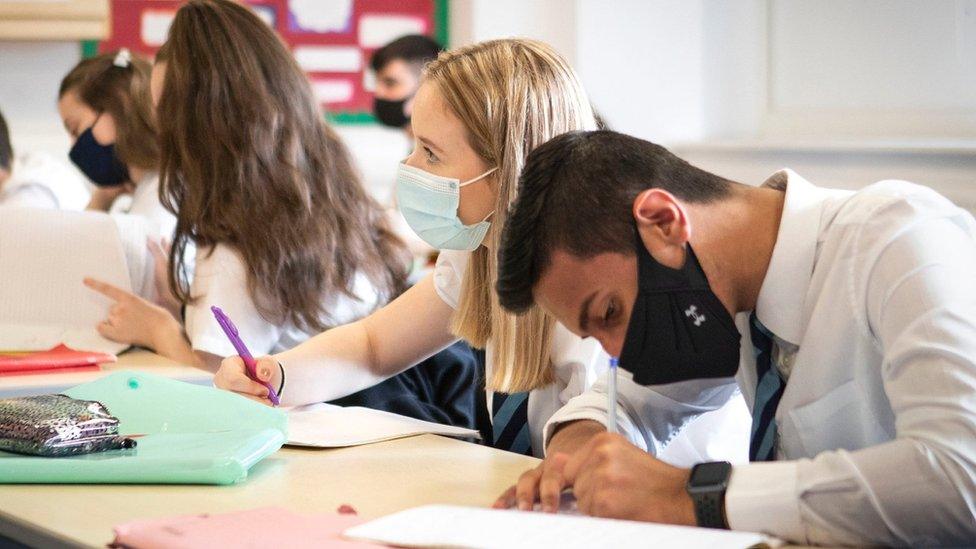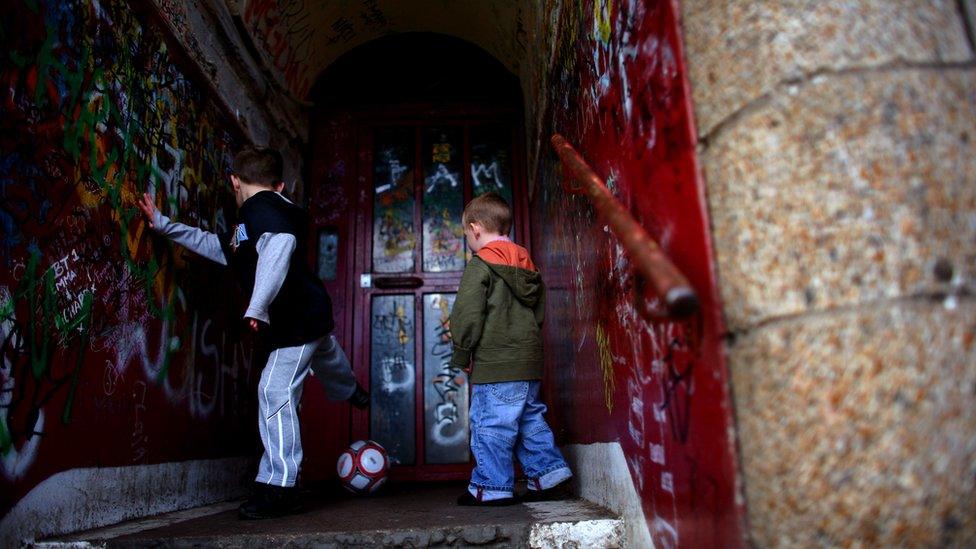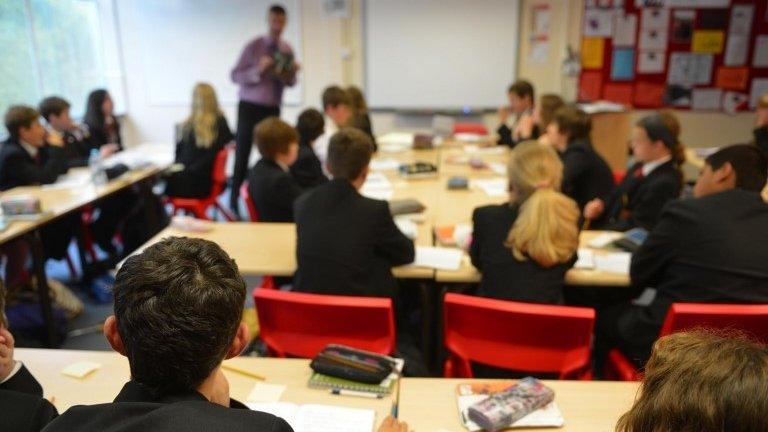School attainment gap 'remains wide', watchdog warns
- Published

The gap between what Scotland's poorest and richest young people are achieving in school "remains wide", a spending watchdog has warned.
Audit Scotland said progress on closing the poverty-related attainment gap since 2013/14 has been limited and "falls short" of ministers' aims.
The watchdog also found inequalities have been made worse by Covid.
The Scottish government said it had made "significant progress" in the last five years.
It pointed to its own report, external, which showed that the gap between primary pupils from the most and least deprived areas achieving the expected level in literacy and numeracy had narrowed since 2016.
Stephen Boyle, Auditor General for Scotland, said: "Significantly reducing the attainment gap is complex but the pace of improvement has to increase as part of the Scottish government's Covid recovery planning.
"That process needs to particularly focus on the pandemic's impact on the most disadvantaged children and young people."

The Audit Scotland report found there is wide variation in council spending per pupil, but no link between that and attainment levels
Audit Scotland found that funding for education has remained largely static, rising from £4.1bn in 2013/14 to £4.3bn in 2018/19.
However, most of that real-terms increase was due to the Attainment Scotland Fund, which the Scottish government set up to close the attainment gap.
The report found that although exam results and other attainment measures have improved nationally, there is wide variation between local authorities, with some getting worse rather than better.
Analysis by Audit Scotland showed that the proportion of school leavers achieving five or more awards at level five was 82.7% for pupils from the least deprived areas, compared to 46.5% for school leavers from the most deprived areas - a gap of 36.2%.
This is down from 41.6% in 2014.
EIS General Secretary Larry Flanagan said: "The impact of poverty on children's life chances remains a matter of huge concern, and much more needs to be done to support young people living in poverty to overcome the barriers that they continue to face.
"Schools do all that they can with insufficient resources to support young people from all backgrounds but cannot, in isolation, overcome such serious societal issues as inequality and poverty."

This was to be the "defining mission" of the Scottish government during this last parliamentary term.
Closing the poverty-related attainment gap is where the first minister said she would put her "neck on the line" to be judged on.
Since then we have had a pandemic, which all quarters agree, has thrown the school system into a spin it could have never anticipated.
"But this report focuses not just on the past year, but on the previous seven, and it shows that although progress has been made, it's been slow and it's been patchy.
The government has released its own report on the attainment gap, which says it is closing and that all parties in Scottish education are working together in a way they haven't before.
The Audit Scotland report says that process needs to go faster and further if the gap is ever going close completely.

The Audit Scotland report says there has been an increase in the types of pathways available to young people, including a near doubling of the number of school pupils under the age of 16 attending college between 2014-15 and 2019-20.
Scottish Conservative education spokesman, Jamie Greene, said: "Nicola Sturgeon repeatedly said people should judge her on the SNP government's education record, but the reality is that after 14 years in charge they have failed miserably to reduce the attainment gap in our schools.
"Even prior to the pandemic, the SNP had failed to address learning inequalities. They have slashed thousands of teachers from our classrooms and broken their promises on reducing class sizes."

The impact of Covid on education is likely to increase levels of inequality for children and young people, says Audit Scotland
Scottish Labour education spokesman, Michael Marra, said: "This long awaited report could not be clearer - the SNP has failed in its mission to close the attainment gap in our schools.
"Before Covid, educational inequality was vast and stubborn. It has undoubtedly increased since. The government focus required to turn this around will be considerable."
'Defining mission'
The Scottish government's own report on attainment showed the gap between the proportion of S3 pupils from the most and least deprived areas, who achieved their expected level in numeracy, narrowed between 2016-17 and 2018-19.
Deputy First Minister John Swinney said: "Closing the poverty-related attainment gap and giving every young person the chance to fulfil their full potential, regardless of their background, remains our defining mission.
"Our ambition is a long-term one and this report clearly shows significant progress has been made in the last five years."
Mr Swinney said Covid had made the government's "ambition of achieving equity in education harder" but he pointed to the £200m added to the Attainment Scotland Fund in 2021-22.
Related topics
- Published2 September 2020

- Published30 May 2018

- Published3 November 2015
